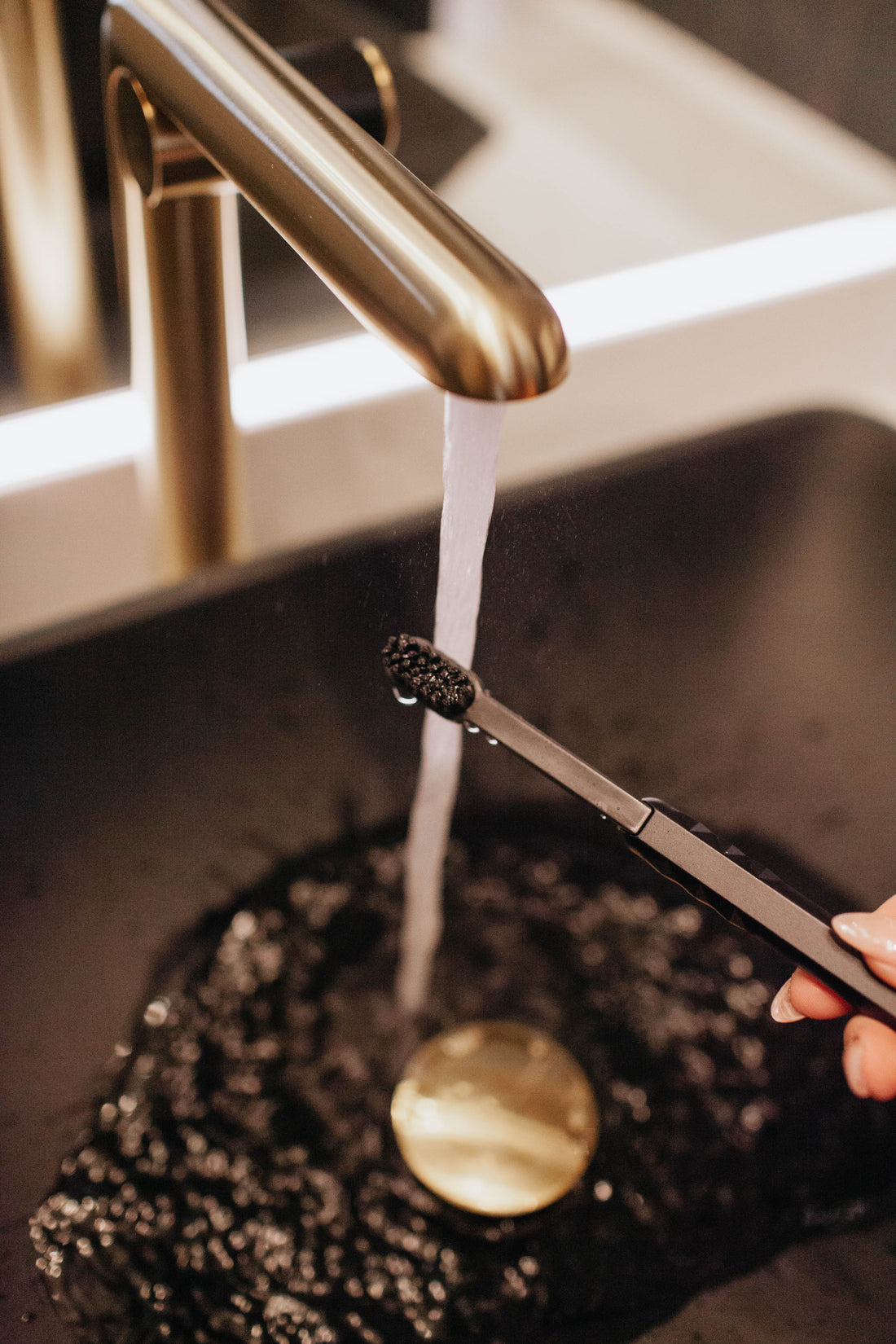
When to Wet Your Toothbrush?
Do you wet your toothbrush before or after putting on toothpaste? It sounds like another one of those silly debate questions, right? You know the kind. Is the dress blue and black or white and gold? Does the toilet paper roll go over or under? You might assume the answer to this question is subjective… Let’s sink our teeth into the research.
Should You Wet Your Toothbrush?
While there is no definitive authority on whether you should wet your toothbrush, many dental professionals offer guidance on toothbrushes and proper brushing techniques.
Teeth Brushing Tips:
- Use a toothbrush with soft bristles. If you like to wet your toothbrush to soften its bristles, that might be a sign you’re using a toothbrush that’s too firm.
- Brush teeth twice a day, two minutes at a time. Check out our Starter Kit. This kit serves as the gateway to a sustainable oral care journey, offering an adult-sized reusable handle crafted from durable anodized aluminum. Available in classic black, rose gold, or silver, this handle exudes sophistication while embodying eco-consciousness and effective air-drying storage solutions.
- Rinse the toothbrush after use and allow it to dry. There may be room to debate wetting a toothbrush before use, but not after! A clean, dry toothbrush and proper storage conditions help prevent bacteria growth.
Are You Supposed to Wet Toothpaste?
Wetting your toothbrush before brushing is generally a matter of personal preference. There’s some debate about wetting toothpaste before brushing and its effects on efficacy, but there's no official guidance. If you need an interesting conversation topic for your next dental cleaning, why not ask your dentist or hygienist? Asking their opinion could help you learn something, or at the very least, save you from the awkwardness of trying to speak while having your teeth cleaned!
When Should You Wet Your Toothbrush?
A virtual war on the microblogging site X has people arguing about the finer nuances of brushing teeth. More specifically, when you should wet your toothbrush while brushing your teeth.
- Before Applying Toothpaste: Some people believe wetting the toothbrush first helps to clean it of any debris or bacteria that may have built up since the last use. They also feel it softens the bristles, making brushing gentler on the gums.
- After Applying Toothpaste: Others wet the toothbrush after applying toothpaste to help the paste adhere to the bristles and to ensure it spreads more evenly in the mouth.
- No Wetting at All: A smaller group doesn’t wet their toothbrush at all, believing that adding water dilutes the fluoride content in the toothpaste, potentially reducing its effectiveness.
Expert Opinions
Even expert opinion is divided when it comes to the ‘wet or dry’ toothbrush debate. Some dentists suggest not using water at all and applying a pea-sized amount of toothpaste. They believe water weakens the bristles and makes them less effective in cleaning teeth. On the other hand, some dental professionals believe that a moist toothbrush can make the brushing experience more pleasant and effective.
Brushing Technique Matters More!
While the debate over when to wet your toothbrush continues, the most important aspect of oral hygiene remains the same: how you brush your teeth. Dentists recommend brushing twice a day for two minutes, spending 30 seconds on each quadrant. Use a timer if you tend to rush through it — the average adult only spends 45 seconds brushing! To effectively remove plaque, apply toothpaste, wet at your discretion, and hold your toothbrush at a 45-degree angle to the gums, gently brushing inner and outer teeth surfaces.
Conclusion
For strong, healthy teeth, your wetting preference really doesn’t matter. Rather, the key is keeping up with your daily brushing and flossing. So whether you’re a pre-paste wetter, a post-paste wetter, or a no-wet warrior, stick to a consistent brushing routine, and you’ll be on your way to optimal oral health.
